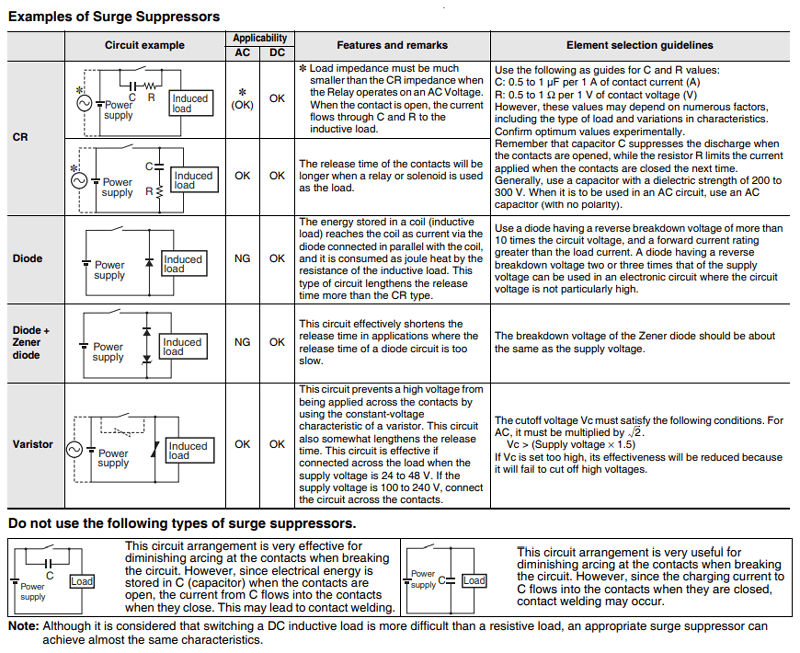What are surge countermeasures in coil relays?
ID: FAQE10041E
update:
Answer
The back electromotive force generated by the coil when it’s turned off may cause damage to the semiconductor or device malfunction. As a countermeasure, add a surge-absorbing circuit to both ends of the coil.
If a surge-absorbing circuit is added, the relay release time will be longer. Check the circuit before use.
Explanation
Surge countermeasure
- Driving DC coil relay: Diodes are typically attached to the relay coil.
- Driving AC coil relay: Varistors/CR elements are typically attached to the relay coil.
Examples of Surge Suppressors

For more information, see Safty Precautions for All Relays: 2-2-5 Preventing Surges When the Coil Is Turned OFF.
Quick tips
We have prepared a technical support page dedicated to high-capacity relays that explains in detail "I don't know" when using high-current, high-voltage PCB power relays, such as back EMF voltage (Zener diode and varistor) of the coil, holding voltage application circuit, recommended conditions for high-current substrate flow solder, the influence of magnetic fields, and precautions when connecting in series and parallel. Please also use this as well.
Click here for the high-capacity power relay technical support page.
| Product category | Relays Signal Relays Power Relays |
|---|---|
| Classification | Usage, Applications |
| Related keywords |
|
